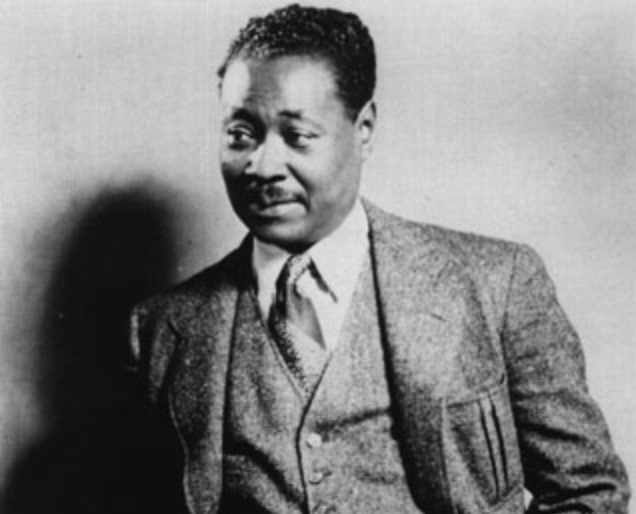A poem titled “St. Isaac’s Church, Petrograd,” that appeared in October 1947 in the Catholic Worker newspaper, opens with these words: “Bow down my soul in worship, very low, / And in the holy silences be lost.” Half of the sonnet’s lines begin with the word “bow,” creating a rhythm of supplication. The poem ends with the speaker describing a statue of Christ: “Bow lowly down before the sacred sight / Of man’s Divinity alive in stone.”
The poem was written by Claude McKay, the accomplished poet and novelist, who had converted to Catholicism three years earlier. A writer famed for his work created during the Harlem Renaissance, McKay’s religious conversion has since confounded literary critics—who prefer to ignore his decision rather than engage his complex, contradictory life as a black Catholic in America.
McKay published a dozen poems in Catholic Worker, prompted by a correspondence with Dorothy Day. They’d first met in New York City before either converted to Catholicism. In one note, Day, discussing Paul’s letter to the Romans, says “We all have different parts, in the Mystical Body of Christ. Some teach and some rule, some serve humbly.” She connects this to her vision of society, in which “we all have different functions,” before acknowledging that she and McKay had taken different paths in their lives.
McKay’s religious and ideological switch was profound—so much that admirers, and even contemporary scholars, seek to explain away his conversion. The history of “St. Isaac’s Church, Petrograd” serves as an example. McKay originally wrote the poem in 1925. A few years earlier, he’d become interested in Russia as a culture of revolution. In his memoir, A Long Way from Home, McKay wrote that like many other writers, he felt “stirred by the Russian thunder rolling round the world.”
He traveled to Russia in 1922, and was soon hypnotized: “it was all like a miracle, all that Byzantine conglomeration of form and color, shedding down its radiance upon the proletarian masses.” He quickly became something of a celebrity; on Tverskaya Street in Moscow, citizens and soldiers alike carried him on their shoulders—“I was the first Negro to arrive in Russia since the revolution . . . I was like a black icon.” He felt free and privileged, the opposite of his identity as a black man in America.
McKay published his Russia poem in a special issue of the magazine Survey Graphic, subtitled “Harlem: Mecca of the New Negro.” The poem was originally titled “Russian Cathedral,” and was written with a Bolshevik, not Christian, spirit. The version that would later appear in Catholic Worker feels pious, humble, and considered. In the earlier version, the cathedral is merely an initial image that makes the speaker think about grand structures and creations of man, including the pyramids. He concludes that often power often fails: “The darkness swallowed thee again. / Thou art the harlot, now thy time is done, / Of all the mighty nations of the sun.”
Although the speaker’s conclusion has merit—often power leads to “arrogance” and destruction—this earlier version of the poem is bombastic, not contemplative. Years later, when he sent the new version to Day at the Catholic Worker, he seemed a different writer. Formerly the speaker had used the Christian cathedral as a way to criticize opulence; now, the sight “moves the depths of me, / The soaring arches lift me up on high, / Taking my breath with their rare symmetry!” What happened to change McKay’s mind—and his poetry?
In the late 1930s, the hyperbole of his past Russia trip paled in the present reality. In 1939, the Nazis and Soviets signed their nonaggression pact. McKay thought Communism an even more insidious than Nazism: “I don’t think Hitler ever had a chance to make his doctrine international. Whoever wanted to join the Bund in America but Germans? But every sentimentalist of all races wants to join the Communist Party because it is hooked up with the idea of helping the long suffering working class and abused and exploited people.”
The fa√ßade of Communist propaganda now made clear, McKay’s views soon evolved. He received medical treatment at Friendship House in Harlem, a Catholic institution. In 1943, he was expressing an interest in conversion. In a letter, he wrote that if he “were drawn to the Church it would be as T.S. Eliot, who became an Anglo-Catholic from purely intellectual and social reasons.”
Yet the poems composed during this time period suggest his conversion was more than an intellectual decision. His began writing his so-called “Cycle Manuscript,” a collection of sonnets that started with a proclamation: “These poems distilled from my experience, / Exactly tell my feelings of today, / The cruel and the vicious and the tense / Conditions which have hedged my bitter way / Of life. But though I suffered much I bore / My cross and lived to put my trouble in song.”
Much of that song would remain unpublished—an editor at Harper’s magazine said they were “too bitter and personal”—but they reveal that McKay’s turn was spiritual, personal, but also literary. He died in 1948, never quite recovering from his previous ill health, but left behind a powerful testament of how drastically a poetic life can change, captured in lines like those from “Truth”: “I found it not in years of Unbelief / In science stirring life like budding trees, / In Revolution like a dazzling thief, / Oh, shall I find it on my bended knees?” He suspected the answer: “In this vast world of lies and hate and greed, / Upon my knees, Oh Lord, for Truth I plead.”
Nick Ripatrazone has written for Rolling Stone, Esquire, The Atlantic, and is a Contributing Editor for The Millions. He is writing a book on Catholic culture and literature in America for Fortress Press.

